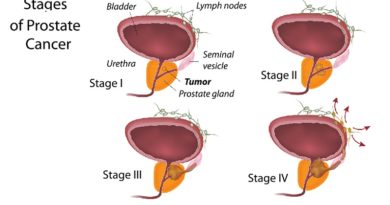Risk of Prostate Problems: How to Reduce
As men age, the risk of prostate problems increases, including benign prostatic hyperplasia (BPH), and prostate cancer. Prostate health is an essential concern, particularly for men over the age of 50. The prostate is a small gland located below the bladder. It plays a vital role in male reproductive health by producing seminal fluid. While some risk factors, including age and genetics, are beyond your control, there are many lifestyle changes you can adopt to reduce the risk of prostate problems. This article will explore evidence-based strategies to help prostate health, from diet and exercise to managing stress and regular check-ups.
1. Adopt a Prostate-Friendly Diet
Your diet plays a significant role in maintaining prostate health. Research has shown that certain foods and nutrients can help reduce inflammation and lower the risk of prostate-related issues. Here are some dietary recommendations to keep your prostate healthy and reduce the risk of problems :
a. Fruits and Vegetables: Increase Your Intake
Fruits and vegetables are rich in vitamins, minerals, and antioxidants that help fight inflammation and oxidative stress. Inflammation and oxidative stress, both of which are linked to prostate problems. Cruciferous vegetables like broccoli, cauliflower, Brussels sprouts, and kale are especially beneficial for prostate health due to their high sulforaphane content. Sulforaphane is a compound shown to protect against cancer by inhibiting the growth of cancerous cells.
Other antioxidant-rich foods, like tomatoes, contain lycopene, which can reduce the risk of prostate cancer. A study published in the Journal of the National Cancer Institute found that men who consumed more lycopene-rich foods had a lower risk of prostate cancer.
b. Choose Healthy Fats
Incorporating healthy fats, like omega-3 fatty acids in fatty fish like salmon, mackerel, and sardines, can help reduce body inflammation. Omega-3s have been shown to lower the risk of prostate cancer and improve overall cardiovascular health. In contrast, high consumption of saturated fats and trans fats, often found in processed and fried foods, can increase the risk of prostate problems.
c. Limit Red and Processed Meats
Some studies suggest that a high intake of red and processed meats may increase the risk of prostate cancer. It’s a good idea to limit these meats and opt for lean protein sources like poultry, fish, beans, and legumes. Additionally, grilling or frying meat at high temperatures can create carcinogenic compounds, which are linked to cancer, including prostate cancer.
d. Stay Hydrated
Proper hydration is vital for overall health, including prostate function. Drinking enough water helps to flush out toxins and reduce the risk of urinary tract infections and inflammation, which can affect the prostate. Aim to drink at least 8 cups of water a day and reduce your intake of sugary or caffeinated beverages, which can irritate the bladder and prostate.
2. Healthy Body Weight
Being overweight or obese is linked to an increased risk of prostate problems, particularly BPH and prostate cancer. Excess body fat can lead to higher levels of inflammation and hormonal imbalances, which contribute to prostate problem development. Maintaining a healthy weight through diet and exercise is one of the most effective ways to reduce your risk of prostate issues.
Regular physical activity helps regulate hormone levels, improve circulation, and boost the immune system. A sedentary lifestyle, on the other hand, can increase the risk of weight gain, obesity, and prostate problems.
3. Exercise Regularly
Exercise is useful for weight management and plays a role in prostate health. Studies have shown that men who engage in regular physical activity have a lower risk of prostate problems, including prostate cancer. Exercise helps reduce inflammation, improve immune functions, and regulate hormones, all of which can lower the risk of prostate-related conditions.
a. Aerobic Exercise
Aerobic exercises like walking, jogging, swimming, and cycling improve heart health and boost circulation, which can reduce inflammation and improve prostate functions. Aim for at least 30 minutes of moderate-intensity aerobic activity most days of the week.
b. Strength Training
Strength training exercises, including weightlifting or resistance band workouts, increase muscle mass and support overall physical health. Building lean muscle mass can also help regulate hormone levels, which play a role in prostate health.
c. Pelvic Floor Exercises
Pelvic floor exercises, also known as Kegel exercises, can help strengthen the muscles that support the bladder and prostate. This can improve urinary functions and reduce the symptoms of BPH, like frequent urination or difficulty emptying the bladder. To perform Kegels, tighten the muscles you would use to stop the flow of urine, hold for a few seconds, and then release. Repeat this exercise several times a day.
4. Manage Stress
Chronic stress hurts prostate health. Stress triggers the release of hormones like cortisol, which can lead to inflammation and suppress immune functions, both of which can increase the risk of prostate problems. Stress also exacerbates symptoms of BPH or prostatitis.
Practicing stress-reducing techniques like meditation, deep breathing exercises, yoga, or mindfulness can help manage stress levels. Engaging in hobbies, spending time with loved ones, and prioritizing relaxation can also support mental well-being and reduce stress.
5. Limit Alcohol and Caffeine Intake
Excessive alcohol and caffeine consumption can irritate the bladder and worsen symptoms of BPH, such as frequent urination or urinary urgency. While moderate consumption of alcohol does not have a significant impact on prostate health, it’s important to limit heavy drinking. Caffeine, found in coffee, tea, and some soft drinks, is a diuretic that can increase the frequency of urination and irritate the urinary tract. If you experience urinary symptoms related to prostate issues, consider cutting back on alcohol and caffeine to see if it improves your symptoms.
6. Regular Prostate Screenings
Regular prostate screenings are essential for detecting prostate problems early, particularly prostate cancer. The most common screening tests include the prostate-specific antigen (PSA) blood test and a digital rectal exam (DRE). The PSA test measures the level of PSA in the blood, and elevated levels can indicate the presence of prostate cancer or other prostate conditions.
7. Avoid Smoking
Smoking is a known risk factor for many cancers, including prostate cancer. The chemicals in tobacco can damage the DNA in cells, leading to the development of cancerous cells in the prostate. Quitting smoking can reduce your risk of prostate cancer and improve overall health.
Conclusion
Prostate problems are common, especially as men age, but there are many lifestyle changes you can reduce the risk. A healthy diet, regular exercise, stress management, and routine screenings are all crucial steps toward maintaining prostate health. By taking these proactive measures, you can significantly lower your risk of prostate-related conditions and lead a healthier, more fulfilling life.
Sources:
Lycopene and Risk of Prostate Cancer: A Systematic Review and Meta-Analysis – PubMed (nih.gov)
Discover more from Helal Medical Manila
Subscribe to get the latest posts sent to your email.




